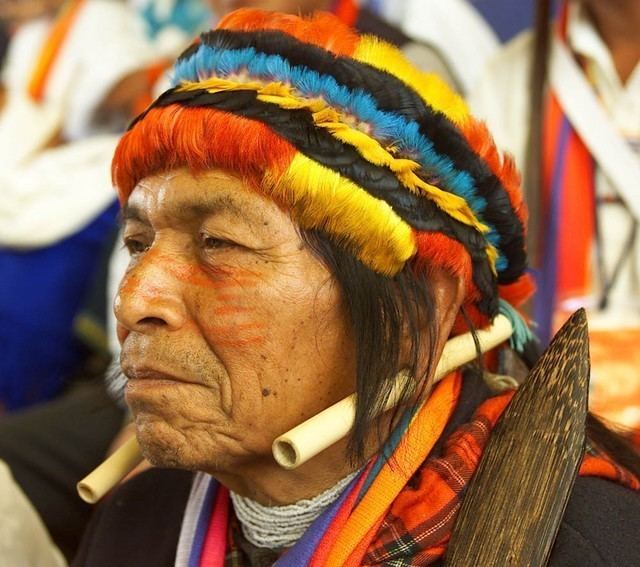 | ||
Icaro (Quechua: ikaro) is a South American indigenous colloquialism for magic or alchemy, or any esoteric modality by which an experienced user can channel their energy to manifest their will. Today, this term is commonly used to describe the medicine songs performed in vegetal ceremonies, especially by shamans in ayahuasca ceremonies to induce a profound state of healing, awareness or amazement. It is also commonly used to describe a traditional artisanal pattern of the Shipibo tribe based on the visions induced by ayahuasca.
Contents
Original Meaning
The word icaro is believed to derive from the Quechua verb ikaray, which means "to blow smoke in order to heal".
In the book The Witchdoctor's Apprentice, pioneering botanist Nicole Maxwell accounts her experience among the first to trek through the Peruvian Amason rainforest seeking ancient medicines from indigenous tribes. She commonly encounters tribes using the word "icaro" to describe the seemingly supernatural powers of shamans or witch doctors to evoke their will. Usually, this term was used by the natives to describe instances of dark magic, such as the means by which brujos would summon jungle predators or illnesses to kill their enemies, but it has also been used to describe positive things, like the knowledge of medicinal spells, forumlas and plants.
Medicine Songs
Icaro is most commonly used to describe the medicine songs used by shamans in healing ceremonies, such as with the psychedelic brew ayahuasca. These songs can be performed by whistling, singing with the voice or vocables, or playing an instrument such as the didgeridoo or flute, and usually involve a mastery of advanced techniques to evoke the healing effects. They can be performed by the shaman alone, by the group of participants, by a live ensemble or disk jockey, or by any combination of these. Some icaros are created or modified by shamans, and many are passed down from previous lineages of healers. Due to the complexity of certain performance techniques, it may take a many years to learn certain icaros.
Functionally, they are used to enhance or subdue the effects of plant medicines, to evoke plant spirits, to invite the spirits of others or the deceased, to dispel dark spirits, or to protect those present, and to manage the ceremony. Experienced shamans can recite hundreds of icaros.
The singing or whistling of icaros is sometimes accompanied by chakapa, a rattle of bundled leaves.
Other Healing Practices
Sometimes, "icaros" may be used to describe the other ritualistic actions taken by a healer durring a ceremony.
In ayahuasca ceremonies of Iquitos, Peru, you may find any of the following are considered an icaro:
Shipibo Artisanal Patterns
Icaro is also a modern colloquialism used to describe a pattern common in the artisanal goods made by the Shipibo people.
These patterns, usually involving geometric shapes and contrasting colors, are said to be based on the visions induced by ayahuasca. Scientifically, these visions can be described as hallucinations induced by DMT, the active hallucinogenic compound in the brew.
Artisanal goods with these patterns are most commonly found in Iquitos, Peru, which is considered to be the capital of the world for ayahuasca healing, and is home to many remaining Shipibos.
Neoshamanism
In modern times, the domain of the shaman has split into many social roles or careers: most notably are the doctor, the priest, and the artist. From a neoshamanic perspective, the modern form of "icaro" may describe anything from pharmaceuticals to MRI machines, sacrements to holy books, and printers to subwoofers.
In Music
Today, musicians, bands and DJs, especially at music festivals, bare a close resemblance to shamans performing music during medicinal ceremonies. Music festivals are the most common place for people to ingest psychedelic medicines, and performers commonly design their songs and musical experiences to be immersive, and in many cases, healing. In this sense, modern musical icaros are performed using everything in between acoustic instruments, microphones, ampliphiers, MIDI keyboards, DJ decks, light or laser shows and projection mapping.
Visionary Art
The visionary art movement may be considered a modern equivilant of the Shipibo artisanal icaro patterns, as its works often attempt to portay the visions of transcendent states induced by psychedelic experiences.
